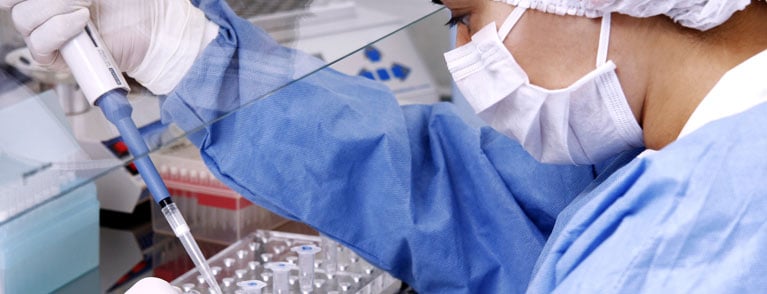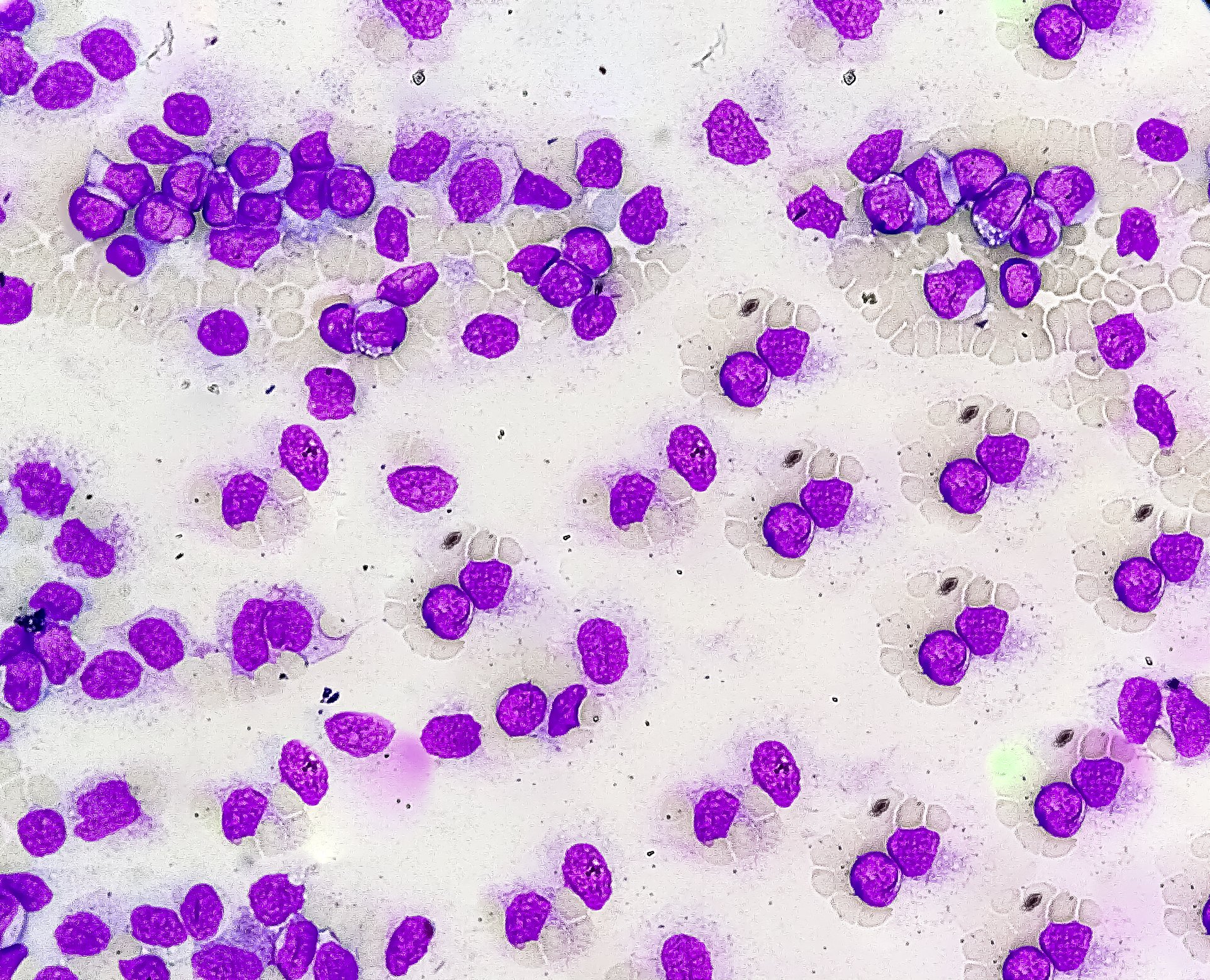Sports medical examinations check the state of health and the fitness for training and competition, but also serve to detect functional disorders such as overtraining or an increased susceptibility to infections at an early stage. In the case of changes in the blood count, a distinction must be made between acute changes after athletic exertion and chronic changes in endurance athletes. The most common disorder of iron metabolism is iron deficiency. Laboratory tests reveal lowered hemoglobin and ferritin levels, and the leading clinical symptom is reduced performance. Fat metabolism is positively influenced by endurance-oriented physical activity. Cardiac troponins and BNP may be passively elevated in athletes during acute exercise but show normal values at rest.
Sports medicine focuses on researching the effects of exercise and lack of exercise on the human body. Sports medicine examinations are therefore recommended for all amateur athletes as well as for children and adolescents, irrespective of indications of a disease.
Although positive health effects of moderate physical activity are undisputed, it must be kept in mind that any form of physical activity can acutely worsen existing, especially previously undiagnosed, underlying diseases. A well-known example is sudden cardiac death during exercise, which is not an athlete’s disease but a final exacerbation of preexisting heart disease caused by physical activity. On the other hand, numerous musculoskeletal disorders that can occur in the course of sporting activity are “genuine” sports-related illnesses, e.g. tennis elbow, footballer’s knee, skier’s thumb, boxer’s nose or fatigue fractures. In addition, non-traumatic changes also occur under physical stress, for example electrolyte disturbances, which may be pathological in character.
Sports medicine examinations
The above examples illustrate the necessity and importance of sports medicine examinations to check the state of health and fitness for training and competition, as well as to be able to recognize and treat functional disorders such as overtraining, but also an increased susceptibility to infections at an early stage. A sports medicine check-up includes a medical history, physical examination, resting ECG (if necessary) and basic laboratory, as well as a sports medicine and sport-specific consultation. During the consultation, one is particularly concerned with the state of health, fitness as well as training load and training extent.
From the age of 35, an extended examination is recommended if there are indications of a possible disease or if risk factors are present (obesity, smoking, high blood pressure). Ergometry (exercise ECG) and advanced laboratory tests should be performed.
Basic information on laboratory tests
Laboratory tests allow statements about health as well as diagnostics and progress monitoring of diseases that have to be taken into account when practicing sports (iron deficiency anemia, diabetes mellitus, kidney diseases). In addition to blood count, iron, liver and lipid metabolism values as well as electrolytes and blood sugar values, the determination of thyroid hormones and cardiac troponins is also of great importance.
Blood count changes with acute stress
Blood count changes are dependent on the type and duration of athletic activity. In the acute situation of physical stress, plasma volume decreases, with a simultaneous increase in hematocrit. This is mainly a result of blood pressure increase and vasodilatation of the working muscles with consecutive filtration of fluid into the tissues. This redistribution increases oxygen transport capacity during acute stress [1]. The plasma volume is replenished as early as 30-60 minutes after the end of exercise, assuming sufficient fluid intake; after a further 24 hours, depending on the previous exercise, overcompensation of the plasma volume occurs with a simultaneous drop in hematocrit (overcompensation process) [1].
White blood cell count increases by 50-100% under acute stress and decreases to as low as 50% of baseline after stress. This effect is called “open window” and reflects the significantly increased susceptibility to infection after acute physical stress.
Platelet count increases during athletic activity in the context of coagulation activation both inflammation-mediated (traumatic opponent or object contact) and by increased sympathetic activation [2]. Thus, the influence on the coagulation system depends not only on the duration and intensity, but also on the type of stress (individual sport vs. team sport, competitive situation) [2].
Blood count changes with regular sports activity
Chronic blood count changes are also found in individuals with regular and sustained athletic activity. Due to the successive overcompensation processes in the course of longer training phases, the plasma volume increases by an average of 40%, in extreme cases up to 60%, compared to untrained persons. In addition to better thermoregulation, this supercompensation principle also enables a fundamentally increased blood volume [1].
At the same time, as a result of traumatic destruction of red blood cells after endurance exercise, a lowered hematocrit and hemoglobin value is found, the so-called “Runners Anemia” [3]. The blood loss caused in this way is, for example, 5-13 ml during a marathon race. Platelet counts also decrease measurably in endurance athletes, which is considered a positive, cardioprotective effect.
Incidentally, extreme athletes may experience a passive increase in creatinine to above 1.1 mg/dl, but a pathological increase to values well above 1.3 mg/dl is rare [4]. The increase in creatinine levels caused by sport in connection with the use of painkillers is a cause for concern. Endurance exercise in combination with the use of anti-inflammatory drugs such as paracetamol or non-steroidal anti-inflammatory drugs (ibuprofen, diclofenac) carries the risk of acute and or chronic kidney damage [3].
Iron metabolism
The most common disorder of iron metabolism is iron deficiency. Laboratory tests reveal lowered hemoglobin and ferritin levels, and the leading clinical symptom is reduced performance. In athletes, the daily iron requirement is approximately 1 mg higher than in non-athletes. Therefore, iron deficiency is particularly noticeable in athletes. If left untreated, iron deficiency can have further damaging effects on the whole organism.
The usual treatment provides for 4 to 12 weeks of iron substitution therapy with 100 mg of iron in the morning fasting, preferably with vitamin C, until normalization of levels. Since female athletes in particular often suffer from iron deficiency due to menstrual blood loss, and oral iron supplementation must also be viewed critically because of the possible undesirable side effects, the focus is increasingly on dietary modification by means of an iron-rich diet, in particular the rich consumption of dark meat [5].
Electrolyte balance
Electrolytes must be supplied with food and liquids (isotonic drinks) in sufficient quantities and in the correct proportions. Disturbances of the electrolyte balance manifest themselves in reduced performance and damage the organism. Typical symptoms of a shift in electrolyte balance include muscle twitching, nervousness, heart palpitations or increased blood pressure.
Sodium, together with potassium, is a major player in the regulation of water balance and thus acid-base balance and osmotic pressure. Furthermore, sodium is partly responsible for the excitability of the muscles. Since sodium tends to be supplied in excess through the diet, deficiency is rare. During extreme exercise, sodium levels drop to 135 mmol/l, which is not significantly below the reference range of 138-141 mmol/l [4].
Potassium is essential for the excitability and impulse conduction of nerve fibers, especially for the conduction of excitation in the heart muscle. Moreover, potassium activates a number of enzymes and plays an important role in protein synthesis. Accordingly, hypo- and hyperkalemia can lead to life-threatening conditions.
Calcium is 95% bound in the bone. Normal serum calcium ranges from 2.2 to 2.65 mmol/l. In addition to its importance for bone strength, a number of neuronal and biochemical processes depend on a constant calcium concentration. Phosphate also plays an essential role in this context. A shift in the balance of the calcium/phosphate balance, which is regulated via vitamin D, parathyroid hormone, calcitonin and their mediators, has significant consequences. Pathological deficit of inorganic phosphate and consecutive mobilization of calcium from bone lead to impaired bone mineralization, hematologic dysfunction, altered cell membrane integrity, and decreased cardiac ejection fraction, among others.
Magnesium is particularly important for athletes because it plays an important role in the contraction of skeletal and cardiac muscles and in the nervous system. Magnesium deficiency can manifest as tremors, muscle twitching, muscle cramps, cardiac arrhythmias, and gastrointestinal distress.
Fat metabolism
Fat metabolism is positively influenced by endurance-oriented physical activity. The so-called fat burning occurs primarily at relatively low intensity (aerobic zone). Accordingly, the noticeable portion of the total calorie consumption begins only after prolonged exercise from about 30 minutes. Endurance training can significantly reduce triglyceride levels and achieve a measurable improvement in the lipoprotein ratio (HDL/LDL ratio). Appropriate nutrition can further optimize this change. However, a measurable drop in total cholesterol levels can only be recorded after several weeks (6-8 weeks) of extensive training; in individual cases, cholesterol levels do not react at all.
Blood sugar
It is essential to rule out disturbed blood glucose metabolism before starting sporting activity, as a hypoglycemic crisis is life-threatening. The standard values of fasting blood glucose <5.6 mmol/l and HbA1c value <5.7% serve as a guide. Since the prevalence of diabetes mellitus (especially type 2) is steadily increasing in the population and the course can be significantly improved by physical activity, sporting activity is becoming more important for a growing group of people. Endurance sports are particularly suitable for diabetics, since glucose uptake into muscle cells is stimulated in part in an insulin-dependent manner via exercise.
Thyroid hormones
Thyroid hormones play a key role in both energy metabolism and growth. Hyperthyroidism, if left untreated, is a risk factor especially for people who are active in sports. Clinically, hyperthyroidism is often initially manifested by insomnia, irritability, nervousness, fine-beat tremor, hot flashes, hair loss, and goiter. However, symptoms also include increased blood pressure amplitude and cardiac arrhythmias, hyperglycemia due to mobilization of fat and glycogen reserves, muscle weakness, osteoporotic bone remodeling, fatty liver, and menstrual disorders in women. Untreated hyperthyroidism is an absolute contraindication for sports activity.
Troponins and BNP
Cardiac troponins I (cTnI) and T (cTnT) are part of the laboratory chemistry basis for determining myocardial cell necrosis in cardiac ischemia. For myocardial infarction, the cutoff value is 14 ng/l for cTnT and 26.2-40 ng/l (method-dependent) for cTnI. Troponins are predominantly present bound to tropomyosin complexes, with a small proportion also present as a free pool in the cytosol (cTnI 3-4%, cTnT 6-8%). In acute coronary syndrome, cytoplasmic troponin is released first, followed by troponin bound in the tropomyosin complex. This explains the first measurable troponin increase 2-4 hours after infarction, which may persist for up to 21 days.
Elevated troponin levels and cardiac fatigue are also detected in endurance athletes after exercise, but return to normal after 24 hours [4]. The suggestion that exercise-induced troponin elevations in endurance athletes are due to cardiac ischemia has not yet been verified. Since only small increases in troponin can be measured during exercise – in contrast to acute myocardial infarction – and a rapid normalization occurs, it can rather be assumed that the membrane permeability of cardiomyocytes increases due to exercise and in a transient manner, leading to a release of cytosolic rather than structurally bound troponin [6].
Other parameters supporting this assumption are BNP and NT-proBNP, which are formed by the ventricular myocardium. They reflect the myocardial wall stress that occurs during pressure and volume loading. In healthy athletes, BNP or NT-proBNP levels increase similarly to cardiac ischemia, but under resting conditions, levels are within the normal range. This change is not explained by cardiac cell death, but by the physiological significance of this hormone. As an antagonist of the renin-angiotensin system, BNP influences preload and afterload lowering through natriuresis, vasodilation, and sympathetic inhibition [6]. Whereas patients with coronary artery disease show elevated values even at minimal exercise, athletes show a measurable increase in BNP values analogous to the duration of exercise (myocardial wall stress), but not elevated values even at rest.
Other load-dependent laboratory parameters
Other laboratory parameters that increase measurably during or immediately after exercise are:
- CK total (CK-MM) after sports (muscle soreness)
- Creatinine after creatine supplementation in competitive sports
- Androgens/testosterone through anabolic steroid use for performance enhancement and muscle building.
- Urea and uric acid due to high-protein diet (muscle building)
- Proteinuria with up to eightfold increased microalbumin levels in urine after a marathon.
Literature:
- Platen P, et al: Work and training adjustments of plasma volume. SPOMEDIAL 2001-9; www.vmrz0100.vm.ruhr-uni-bochum.de.
- Limper M: Effects of sports of different disciplines in recreational sports on blood coagulation and fibrinolysis. Dissertation. Interdisciplinary Focus for Hemostaseology, Justus Liebig University Giessen. http://geb.uni-giessen.de/geb/volltexte/2012/9065.
- Brune K, et al: Amateur and competitive sports: Is nothing possible without painkillers anymore? Dtsch Ärztebl 2009; 106(46): A-2303/B-1972/C-1921.
- Khodaee M, et al: Effects of Running an Ultramarathon on Cardiac, Hematologic, and Metabolic Biomarkers. Int J Sports Med 2015; 36(11): 867-871.
- Alaunyte I, et al: Iron and the female athlete: a review of dietary treatment methods for improving iron status and exercise performance. J Int Soc Sports Nutr 2015; 12: 38.
- Scharhag J, et al: Exercise-induced changes in cardiac markers troponin, ischemia-modified albumin, and B-type natriuretic peptide; German Journal of Sports Medicine 2007; 58(10).
HAUSARZT PRAXIS 2016; 11(3): 32-35











